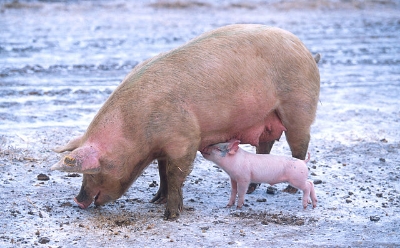We recently wrote a blog about an article discussing how sleeping patterns affected the microbiome and may contribute to obesity, but what about eating patterns? A paper published last week in Cell Metabolism aimed to answer this question.
Three groups of mice were used in the experiment. The first group of mice was given unlimited access to a high fat diet. These mice ate their food all day and night. The second group of mice mice was given a high fat diet but restricted to eat for only 8 hours per day. The final group of mice was given unlimited access to normal food. These mice tended to eat for only 8 hours per day, so they were actually no different than a group of mice restricted to eating normal food for 8 hours per day. The researchers measured all of the mice’s microbiomes, weights, cholesterol, and other metabolites at various time points throughout the day.
Most shockingly, they found that by restricting the mice to a high fat diet for only 8 hours per day decreased their obesity and cholesterol and these mice were indiscriminant from mice eating normally. The mice that ate the high fat diet at all hours were obese, and had high cholesterol. When investigating the mice’s stool, the scientists discovered that the stool of mice with restricted eating times was of higher caloric density than mice eating a high fat diet at all times. This means that mice that eat the high fat diet at any time extract more calories from their food than those mice that restrict their eating. They also discovered that while all mice that ate a high fat diet had similar microbiomes, the mice that only ate for 8 hours had many cyclic bacteria that would flourish and dissipate depending on the feeding schedule, whereas there were less cyclic bacteria in the mice that ate at all times. Furthermore, there seemed to be a decrease in one bacteria associated with obesity, Lactococcus, in the mice with restricted eating times, even with the high fat diet, whereas these bacteria flourished in mice that ate the high fat diet at all times.
From a microbiome science standpoint, this study demonstrates the need to consider diurnal cycles when making microbiome measurements. From a nutrition standpoint it makes one reconsider the benefits of eating many small meals a day versus fasting. If nothing else, the study demonstrates how complex the microbiome, diet, and obesity puzzle really is, and how much we have yet to understand.







